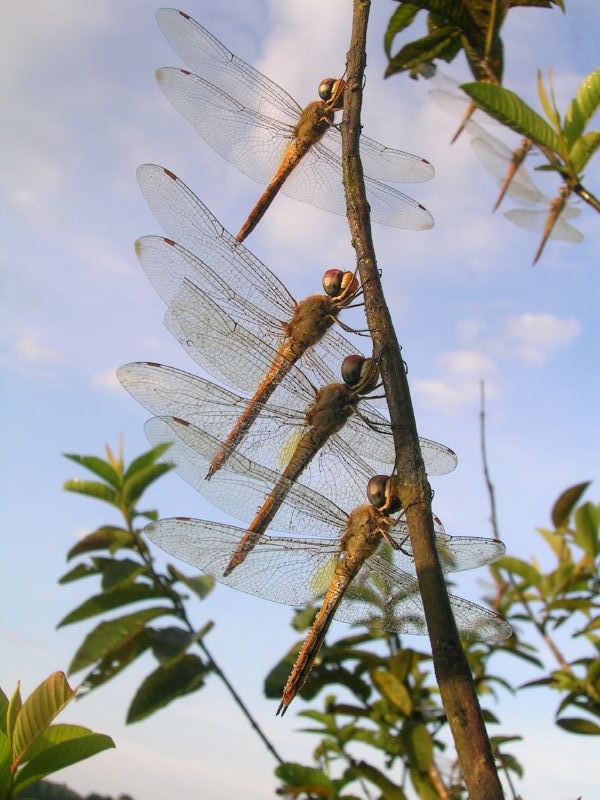BY HARRY WEEKES
You may have heard this reply or made it yourself in answer to a question about a certain kind of animal. It goes like this:
“Do you like spiders?” (or worms, or snakes, or bats—insert the appropriate animal here)
“I don’t mind them … if there aren’t too many of them.”
This always brings up the obvious next question, “How many is too many?”
We know the common collective nouns—school, herd, flock, pride, pack. These have a certain pleasantness to them. “Oh look, a gaggle of geese. A colony of badgers. A parliament of bears.”
But those terms don’t quite capture that feeling that happens when a threshold is crossed, when one, two or three of something you don’t mind becomes a nest of snakes. Or a shiver of sharks. Or a mischief of rats.
I visit my in-laws in Connecticut in July. Dragonflies are not unusual. I wouldn’t say that they are uncommon, but if someone asked me before this summer if there were a lot of dragonflies in Guilford (the town I visit), I would probably look up to the right and respond, “Uhhhh… no. Not a lot. I mean, we see dragonflies, but I wouldn’t say there are a lot.”
To me, dragonflies always seem a little bit solitary, even when there are a handful of them flitting about a pond. Sure, there might be 10-20 at any one time, but they never appear coordinated; they aren’t in some cluster like the ducks or flying together like the geese.
Until…
There were just a lot of dragonflies. I mean, A LOT.
Looking outside, they moved like a thousand small drones. They emerged from the mist over the ocean and moved onto land in their darting, hovering, floating kind of a way. A portion of the larger cloud made its way into the house and immediately started dancing against the windows and the screens, their cellophane wings and exoskeletons making a characteristic crinkling noise as they thumped around.
There were enough that I jumped right to the second question, “How many dragonflies would freak you out?”
How about tens of thousands in a three-minute inundation? This is what happened at Misquamicut Beach in Rhode Island where my son happened to be.
While we were marveling at our flock, he was experiencing an unprecedented swarm of dragonflies that descended onto the beach. One notable sound bite captured the scene and created a possible collective noun: “It’s apocalyptic.”
An apocalypse of dragonflies. Now that captures something for sure.
I am pretty confident the people screaming and running were ones whose numerical threshold had been crossed. They were in the biblical experience. Their collective nouns were implied—a ravage, a terror, a smog. An apocalypse.
And then, there was something else captured in all the ways that social media and the news now capture such things. These were the beachgoers and the people at the folk festival who looked around in a kind of wonder and awe and then reached toward it. Toward them. These were arms lifted, hands extended, and dragonflies landing on outstretched fingers.
In place of lighters flickering and waving, it was dragonflies alighting.
There were smiles and raised eyebrows and fleeting moments of wonder. This was a totally different set of collective nouns—an unexpectation, a surprise, a giggle.
I think I like that one the best—a giggle of dragonflies.
Imagine how differently you would think about that news story: “Tonight, a giggle of dragonflies descended on the music festival.”
Since the giggle has come and gone, my plan today is to go out and look for a few smirks here and there. I don’t think I would mind that at all.
Harry Weekes is the founder and head of school at The Sage School in Hailey. This is his 52nd year in the Wood River Valley, where he lives with Hilary and one of their three baby adults—Simon. The other members of the flock are Georgia and Penelope (Georgia recently fledged from Davidson College in North Carolina and Penelope is at Middlebury College in Vermont).



